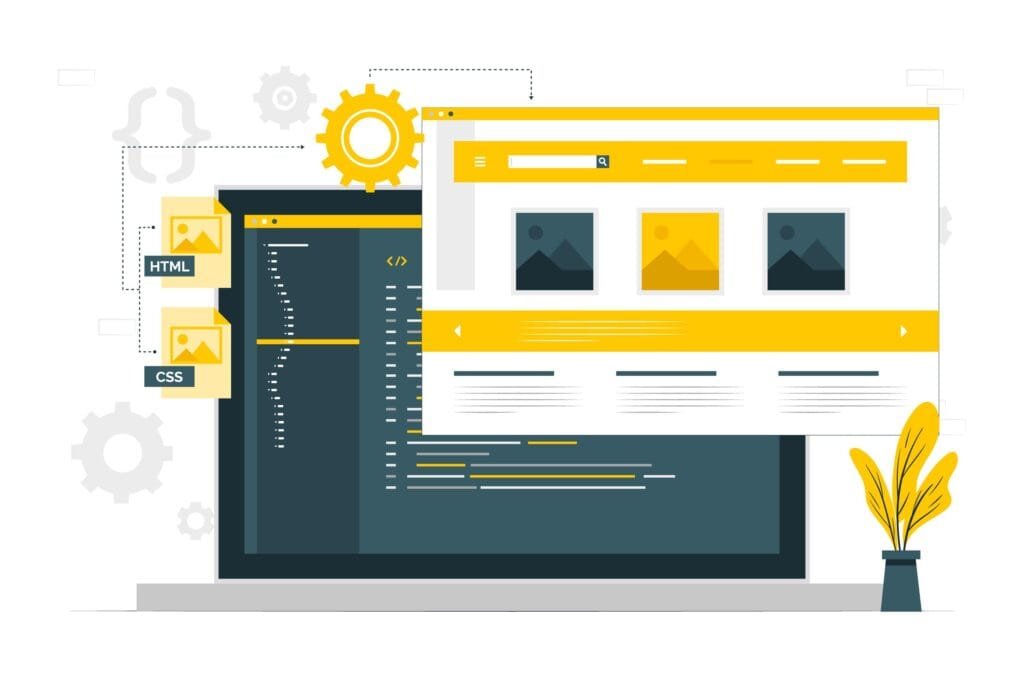How to Choose the Best Web Design for Your Business – Tips & Guide
When it comes to your business, your website is more than just a digital brochure – it’s often the first interaction potential customers will have with your brand. That means choosing the best web design is crucial to making a great first impression, building trust, and converting visitors into loyal clients. But do you know how to choose the best web design for your business? How do you know what’s best?
Don’t worry – we’ve got you covered. In this guide, we’ll walk you through the key factors to consider so you can make an informed decision how to choose the best web design that supports your goals, engages your audience, and helps your business grow.
Why Web Design Matters for Your Business
Before diving into the specifics of design options, it’s essential to understand why web design is so important for your business.
A well-crafted website doesn’t just look pretty – it can directly affect your success. Here’s how:
- First Impressions Count: Visitors judge your website in mere seconds. If it looks outdated or difficult to navigate, they’ll leave. A modern, professional design builds trust and shows that you care about your brand’s image.
- User Experience (UX): A website that’s easy to use keeps visitors engaged. The more enjoyable their experience, the longer they’ll stay, increasing the chances of conversion.
- SEO & Visibility: A well-structured website with clean design elements is not only easy for users to navigate, but also for search engines to crawl, helping your business rank higher on Google.

Understand Your Business Goals and Target Audience
Choosing the best web design isn’t just about aesthetics. It’s about aligning the design with your business objectives and audience needs.
- What Are Your Business Goals?
Are you looking to increase leads? Drive e-commerce sales? Build brand awareness? Your website’s design should support these goals. For example, if you’re focused on lead generation, you’ll want a design with clear calls to action (CTAs) and a contact form. - Who Is Your Audience?
Understanding your audience’s preferences and habits is key to selecting a design that resonates with them. A website designed for a tech-savvy millennial audience might look very different from one built for baby boomers. Consider their preferences, behaviour, and needs when choosing your design.
Types of Web Design Styles
When it comes to how to choose the best web design, it’s important to understand that there’s no one-size-fits-all approach. Different business models and industries call for different design styles. Let’s break it down:
- Minimalistic Design
This style focuses on simplicity, clean lines, and easy navigation. If you want a sleek and modern look for your brand, this could be the way to go. Think Apple’s website – minimal, but effective. Our site here at Freshndup is also designed to be minimalistic, easy to navigate, and easy to use. - E-Commerce Design
If you’re running an online store, you’ll need a design that’s optimised for sales. This includes user-friendly product pages, intuitive navigation, and a smooth checkout process. You’ll also want a mobile-responsive design, since many users shop on their phones. - Portfolio Design
If you’re a photographer, artist, or creative professional, a portfolio design is essential for showcasing your work. A simple, visually-driven design will put your work front and center, letting visitors get a feel for your style. - Corporate or Business Design
For businesses in more traditional industries, a clean, corporate look with clear navigation and professional branding may be the best fit. These sites should still prioritise mobile responsiveness and include features that are SEO-friendly.

How to Choose The Best Web Design – What Key Elements to Look for in Web Design
Now that you have a better sense of the style you want, let’s dig into the essential design features that will make your site both functional and beautiful:
- Mobile Responsiveness:
More than half of web traffic comes from mobile devices. If your website doesn’t work well on smartphones and tablets, you’re likely losing a huge chunk of potential customers. A mobile-responsive design ensures your site looks great and functions smoothly on any device. - Fast Loading Speed:
Visitors won’t stick around if your site takes forever to load. Speed is crucial for both user experience and SEO. Use simple design elements, optimised images, and fast hosting to ensure quick loading times. - SEO-Friendly Structure:
Your website design can influence how well you rank on search engines. A clean, organised structure helps Google crawl and index your pages. Plus, by using SEO-friendly elements (like alt text for images and meta descriptions), you can improve your website’s visibility. - Easy Navigation & Clear CTAs:
Make sure your website is easy to navigate, with clear menus and calls to action. Whether it’s booking a consultation or making a purchase, your CTAs should stand out and guide users through your site effortlessly.
Budgeting and Working with a Web Design Agency
Once you’ve figured out your goals and design preferences, it’s time to think about your budget. How to choose the best web design is also a matter of understanding what you can afford, and whether you should go DIY or hire a professional web design agency.
- DIY vs. Professional Help:
While DIY website builders like Wix or Squarespace can be tempting, they often lack the customisability and professional polish that a web design agency can offer. Hiring professionals can help you get a unique, tailored website that perfectly matches your business needs. - Factors Affecting the Cost:
The price of web design varies based on complexity, functionality, and customisation. Make sure to factor in things like ongoing maintenance, SEO services, and any future upgrades you might need.

Common Mistakes to Avoid When Assessing How to Choose the Best Web Design For Your Business
As with any major decision, there are a few common pitfalls to watch out for when choosing your web design:
- Ignoring Mobile Users:
As mentioned earlier, most internet traffic comes from mobile devices. If your website isn’t mobile-friendly, you could be losing out on a lot of potential customers. - Overcomplicating the Design:
Sometimes less is more. A complicated design can overwhelm visitors and make it difficult for them to find what they need. Keep things simple and easy to navigate. - Choosing Based on Personal Preferences:
While you may have a personal favourite design style, it’s important to think about what works for your target audience and business goals.
So, do we now know how to choose the best web design?
Choosing the best web design for your business is a big decision, but by considering your goals, audience, and key design elements, you’ll be well on your way to creating a website that not only looks great but also drives results.
If you’re still unsure where to start, don’t hesitate to get in touch with us for a free web design consultation. We’ll help you create a website that’s perfectly suited to your business needs.
Sign up for more tips on web design
Want to make sure you don’t miss a thing? Enter your email and we’ll send you our handy web design tips and tricks — free!
I WANT TO SUBSCRIBE!